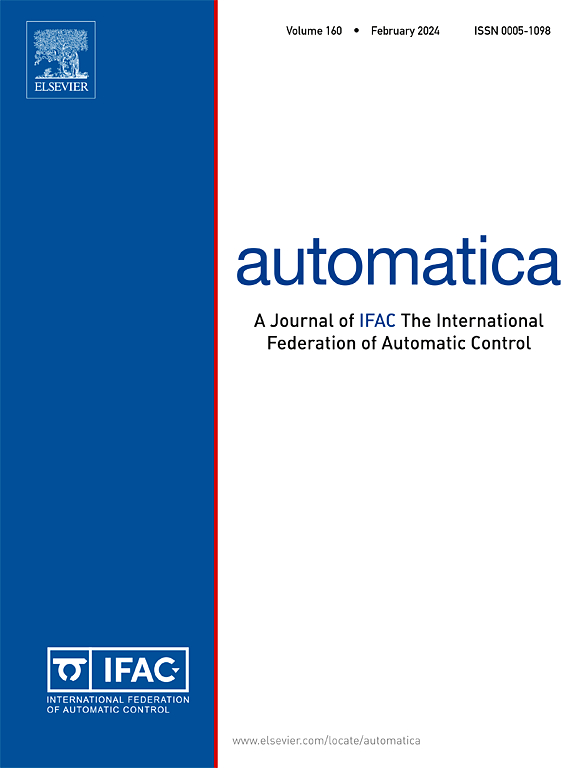Constrained finite-time and fixed-time stabilization for linear systems: Adaptive implicit Lyapunov function-based control
IF 5.9
2区 计算机科学
Q1 AUTOMATION & CONTROL SYSTEMS
引用次数: 0
Abstract
In this paper, finite-time and fixed-time stabilization problems are investigated for single-input single-output (SISO) linear system under the control input constraint. The achievement of finite-time or fixed-time convergence rates is facilitated through the utilization of adaptive implicit Lyapunov function (ILF)-based control. For ease of practical implementation, the dynamics of Approximated-ILF (AILF) guarantees the precise estimation of ILF, while the stability of AILF-based control holds established. Furthermore, from both performance and input-constrained safety considerations, the anti-windup (AW) AILF endows the system with tolerance to saturation and maintains the non-asymptotic convergence properties. Numerical simulations support the obtained theoretical results and verify their effectiveness.
线性系统的约束有限时间和固定时间镇定:基于自适应隐式Lyapunov函数的控制
研究了控制输入约束下单输入单输出(SISO)线性系统的有限时间和定时间镇定问题。利用基于自适应隐式李雅普诺夫函数(ILF)的控制,实现了有限时间或固定时间的收敛速率。为了便于实际实现,近似ILF (AILF)的动力学保证了对ILF的精确估计,同时建立了基于AILF的控制的稳定性。此外,从性能和输入约束的安全性两方面考虑,抗绕组(AW) AILF使系统具有容忍饱和和保持非渐近收敛的特性。数值模拟结果支持了理论结果,验证了理论结果的有效性。
本文章由计算机程序翻译,如有差异,请以英文原文为准。
求助全文
约1分钟内获得全文
求助全文
来源期刊

Automatica
工程技术-工程:电子与电气
CiteScore
10.70
自引率
7.80%
发文量
617
审稿时长
5 months
期刊介绍:
Automatica is a leading archival publication in the field of systems and control. The field encompasses today a broad set of areas and topics, and is thriving not only within itself but also in terms of its impact on other fields, such as communications, computers, biology, energy and economics. Since its inception in 1963, Automatica has kept abreast with the evolution of the field over the years, and has emerged as a leading publication driving the trends in the field.
After being founded in 1963, Automatica became a journal of the International Federation of Automatic Control (IFAC) in 1969. It features a characteristic blend of theoretical and applied papers of archival, lasting value, reporting cutting edge research results by authors across the globe. It features articles in distinct categories, including regular, brief and survey papers, technical communiqués, correspondence items, as well as reviews on published books of interest to the readership. It occasionally publishes special issues on emerging new topics or established mature topics of interest to a broad audience.
Automatica solicits original high-quality contributions in all the categories listed above, and in all areas of systems and control interpreted in a broad sense and evolving constantly. They may be submitted directly to a subject editor or to the Editor-in-Chief if not sure about the subject area. Editorial procedures in place assure careful, fair, and prompt handling of all submitted articles. Accepted papers appear in the journal in the shortest time feasible given production time constraints.
 求助内容:
求助内容: 应助结果提醒方式:
应助结果提醒方式:


